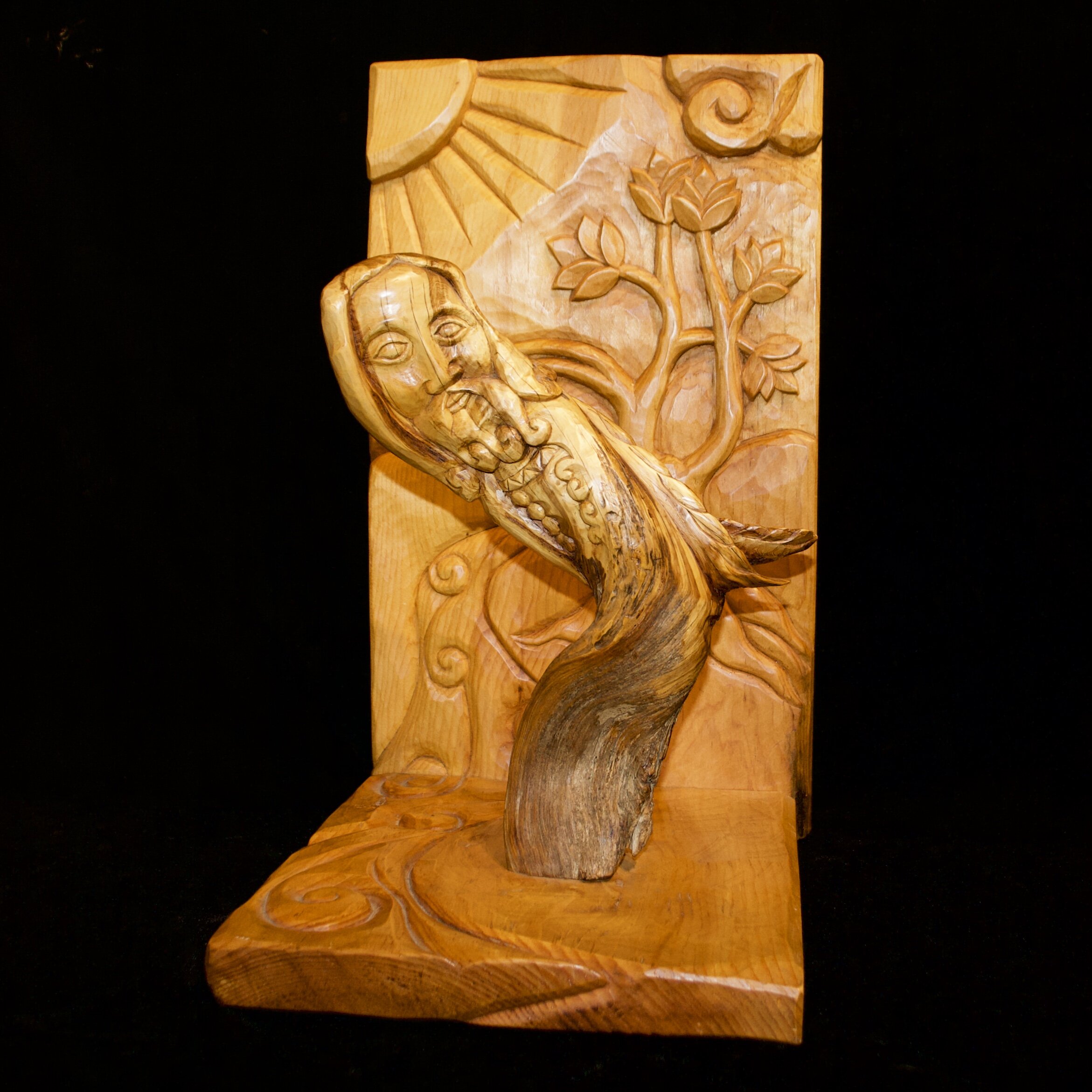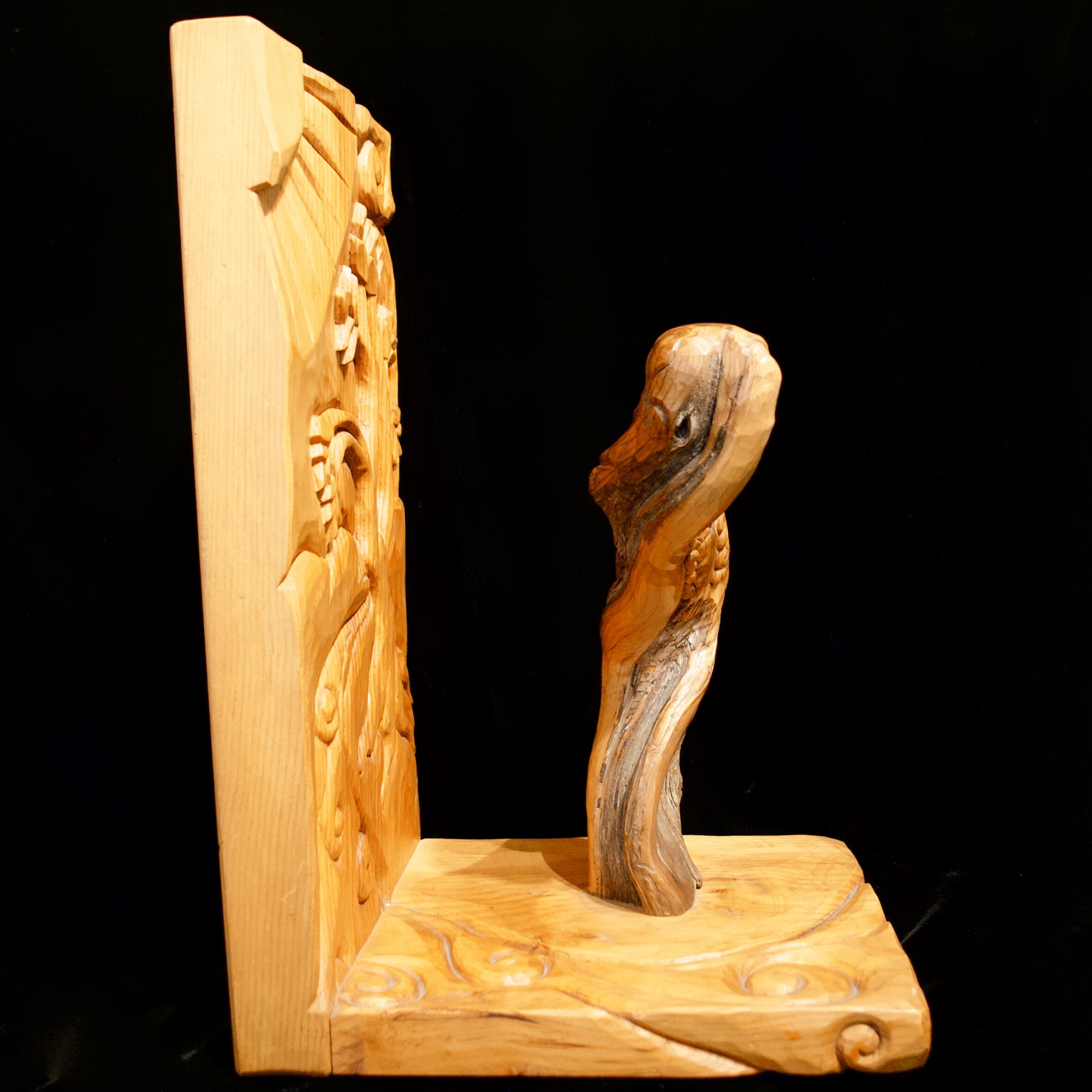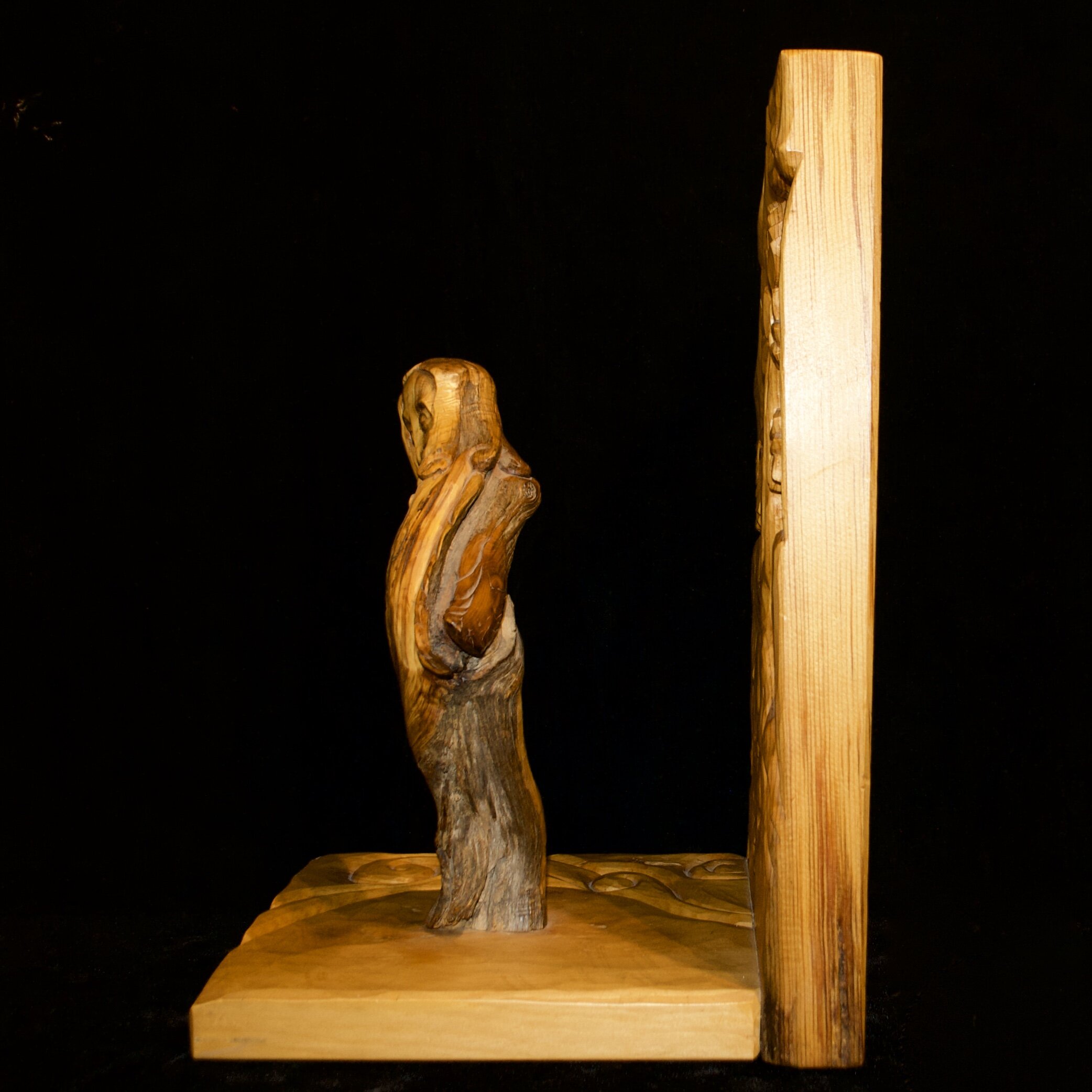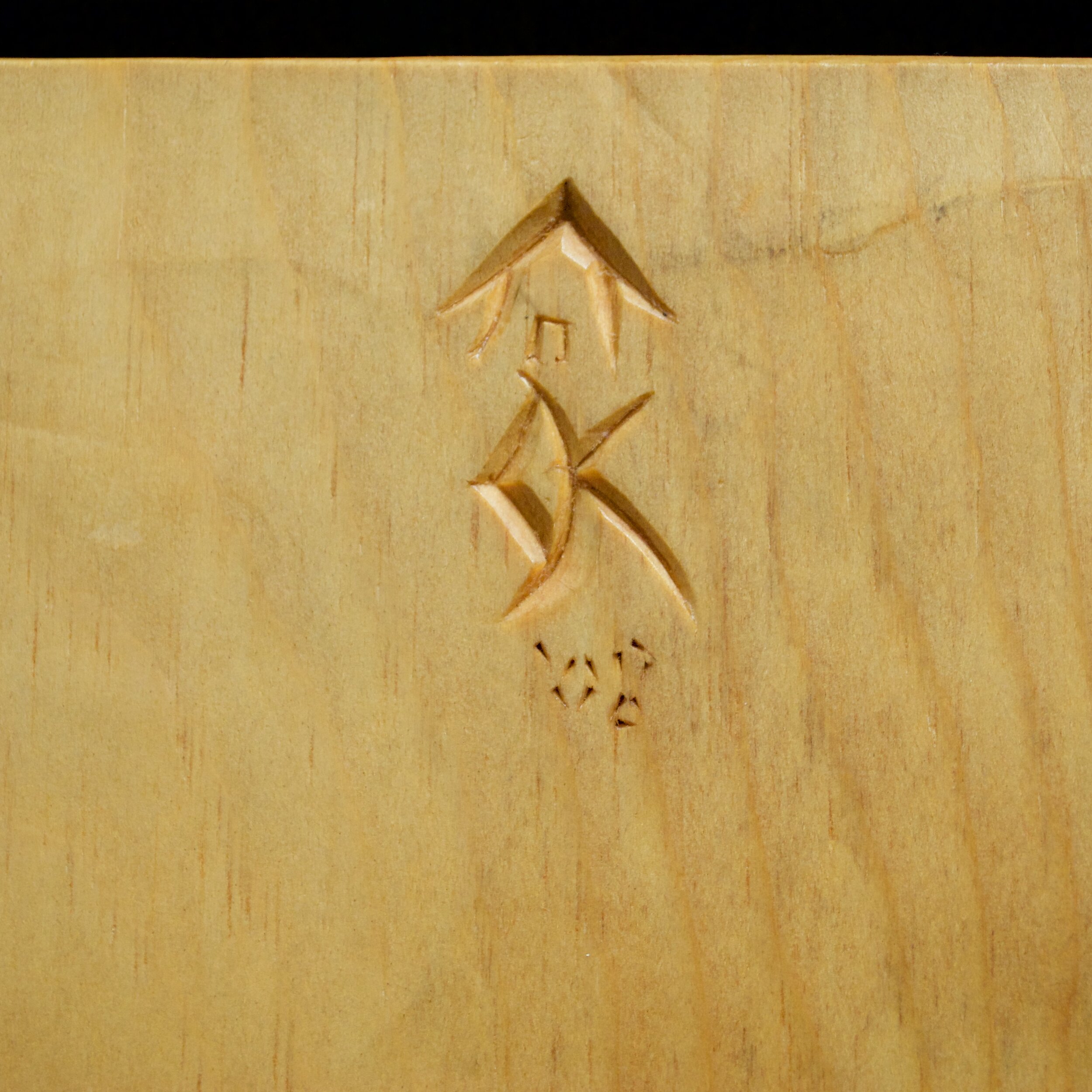- Sculpture
- San Isidro Labrador Cedar Wood Bulto by Chris White
San Isidro Labrador Cedar Wood Bulto by Chris White






San Isidro Labrador Cedar Wood Bulto by Chris White
San Isidro Labrador, the patron saint of agricultural and pastoral lands, hand-carved cedar wood Santo with retablo backdrop, by Chris White of Taos, New Mexico.
Approx: 20 3/8" x 11 3/8" x 4 13 3/4"
San Isidro Labrador, the patron saint of agricultural and pastoral lands, hand-carved cedar wood Santo with retablo backdrop, by Chris White of Taos, New Mexico.
Approx: 20 3/8" x 11 3/8" x 4 13 3/4"
Chris White
Chris White is native to Taos, New Mexico. Born in 1975, Chris grew up in this very diverse culture. Taos offered the arts, the people and the majestic outdoors. Combined, these elements provided Chris with an appreciation for life and fine art. His time in the mountains gave Chris an awareness of wood and grain. In seventh grade Chris enrolled in carpentry class taking a blue ribbon in a junior high school art show. Bryans Gallery bought this piece and an association between Chris White and Bryans Gallery was formed. Chris’ artistic endeavors are numerous. When he was 18, Chris started building his own home on property he bought. The house was built from found objects and recycled timber. Chris graduated with high honors from the Institute of Culinary Education (I.C.E.) in New York, New York. Chris is currently a chef during winter months at the Hotel St. Bernard in the Taos Ski Valley. In the summer months Chris works on carving bultos (sculpture), doors, and furniture. He took first place at Taos Today Show in 2007. Currently, he teaches chip carving and relief at the University of New Mexico .
The Art of the Santero
In Northern New Mexico, the folk art of the Santero originated during the mid to late 1700s. Folk art blossomed out of a necessity — people who arrived from long and arduous journeys lacked decorations or ornaments for their homes and churches. The art flourished until the 1860s when French priests, new to the area, found this folk art to be distasteful and primitive. The folk art form was barely visible by the turn of the 20th century. It was revived with the WPA programs in the 1930s and later through the efforts of the Spanish Colonial Arts Society, beginning in the 1950s. Support of the Santero art form continues today.A Santero is a painter and carver of images. Pine panels split from logs were called retablos. A bulto, or image carved in the round, began as a piece of root of the cottonwood tree, pine or juniper (locally called cedar).
San Isidro Labrador is the patron saint of agricultural and pastoral lands. In New Mexico his image (usually either a carved bulto or retablo) has been used to bless farmlands for centuries, and is still faithfully carried out in the Cordillera/Los Córdovas area near Taos, New Mexico, emanating from the old Capilla de San Isidro Labrador. A special Mass is said and then a procession carrying the saint takes place winding its way through farmland and pastures on its way to the Río Pueblo which is the source of life-giving water that feeds a centuries-old acequia (water-ditch) system, where another blessing is said by the community together with the local priest.


